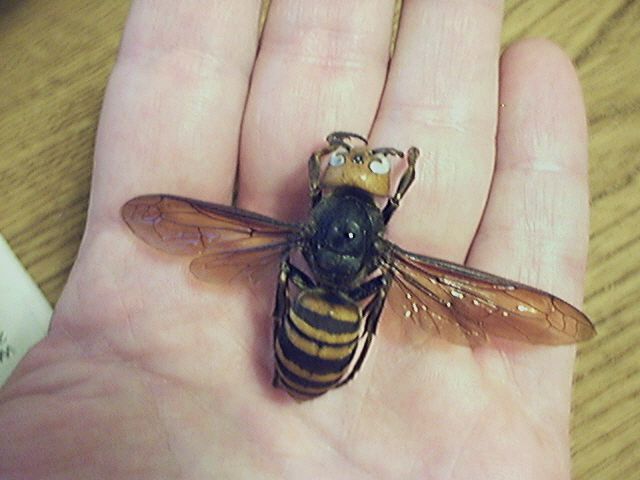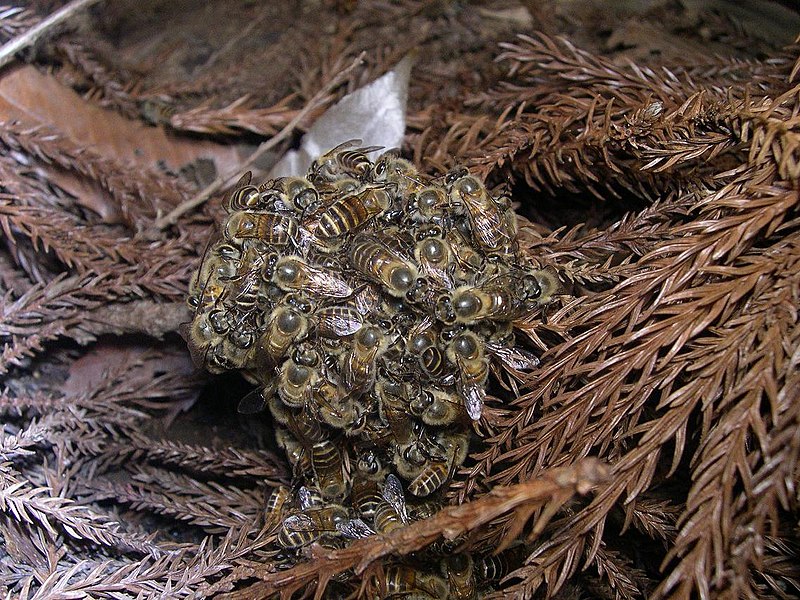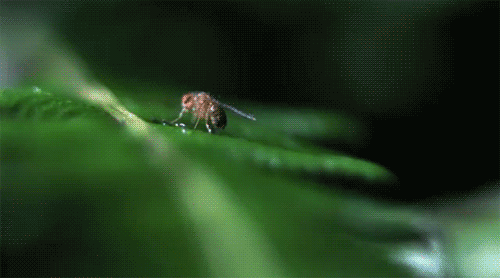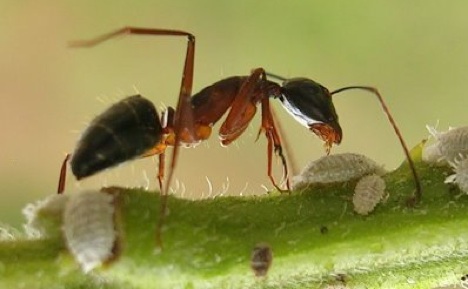Latin Name: Vespa mandarinia
There are probably more insects in the world than any other type of animal. Among the 8.7 million species of insects, the Asian Giant Hornet is probably one you would like to stay away from. First of all, they are currently recorded as the biggest hornets in the world. On average, these hornets are 2 inches long and have a wingspan of 3 inches; just hornets thatare bigger than your thumb. Of course, if the hornets are enormous, so are their stingers. However, not only is their stinger 1/4 inch long, it sprays a potent, flesh-dissolving venom that one human victim has described as having "a hot nail driven into my leg". The danger is that if a person is stung by one of these hornets and do not recieve proper medication, that person might die from the venom. About 40 people die each year from being stung by these hornets.
 |
| Vespa mandarinia japonica
|
While the Asian Giant Hornet has claimed the lives of people each year, they will only attack when they feel threatened, like any other hornet. Instead, they prey on other insects, especially honey bees. Just one of these hornets can kill 40 honey bees in a minute, and a group of just forty of these hornets can massacre 30,000 European bees in a few hours. The reason why the European honey bees fail to fight off these huge hornets is because their stingers are unable to penatrate their thick armor, and these hornets can easily rip apart the bees with their enormous mandibles. After the slaughter, the hornets take all the honey bee larvae to feed ther own larvae.
 |
| Vespa mandarinia |
While European honey bees fall easy victims to these monsters, the Asian honeybees have found a way to defend themselves. As shown in one National Geographic documentary, Asian honey bees have found a way to kill the Giant Hornet without using their stingers. When a scout Giant Hornet has found their hive, they lure the hornet closer by opening the entrance of their hive. Before the scout can release a chemical substance called a pheromone to call other the other hornets, the Asian honey bees suddenly attack, completely covering the scout. After the hornet is engulfed in a ball by hundred of bees, they all begin to violently vibrate. This causes the space inside to reach incredibly high temperature, reaching all the way to 115 degrees Farenheit. In addition, the exertion of the honey bees raise the level of carbon dioxide in the ball. This literally cooks the scout hornet, and the hornet dies before summoning reinforcements that could wipe out the entire colony.
 |
| The Defensive Ball Strategy of the Asian Honey Bees |
The Asian Giant Hornet can be found anywhere in Eastern Asia from the southern region of Russia to Japan and India. They also have numerous names. In Taiwan, they are known as the "Tiger Head Bee", and Koreans recognize them as the "Commander Bee". In Japan, there is a subspecies of Giant Hornets known as the Japanese Giant Hornets (
Vespa mandarinia japonica) where they are known as the "Sparrow Bee".
For More Info, Check These Websites:
http://voices.yahoo.com/giant-insects-japanese-giant-hornet-killer-2312879.html
http://news.nationalgeographic.com/news/2002/10/1025_021025_GiantHornets.html
http://www.wild-facts.com/tag/japanese-giant-hornet/
http://www.cracked.com/article_15816_the-5-most-horrifying-bugs-in-world.html















